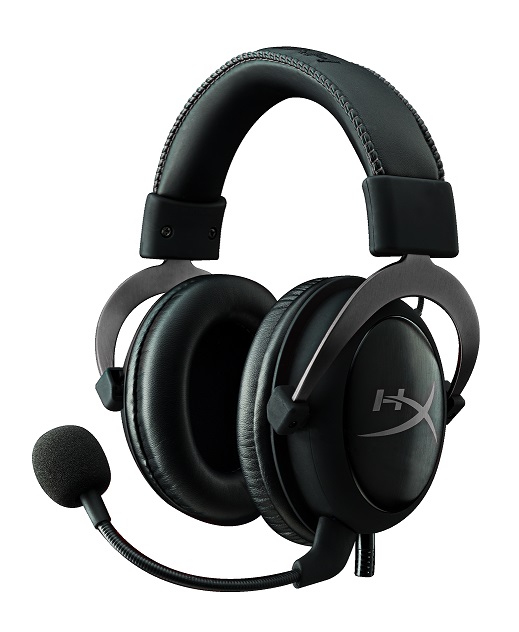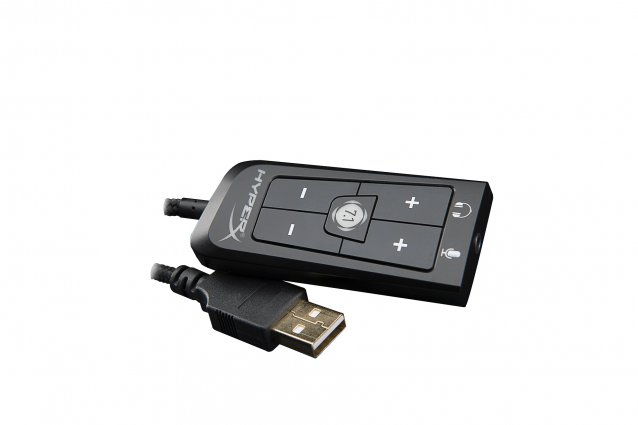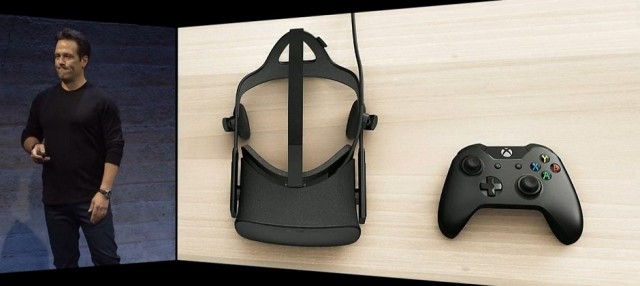


If an award had to be handed to a single gaming headset last year, it surprisingly may not have gone to the most expensive nor obvious names in the market. Kingston, a company known primarily for its memory solutions, would likely have earned that top honor when they introduced the $80 HyperX Cloud. Its excellent comfort and rich audio punched well above its class, making it the headset I reached for and recommended more often than any other in 2014 (you can read my review of it here). Kingston is now set to launch an updated model on February 9th, the 7.1 virtual surround supported HyperX Cloud II, and I couldn't have been more excited to give it a closer look.
The HyperX Cloud II's physical properties are very familiar to its predecessor. There are three new color schemes - gun metal, red and a limited edition pink - but the body is nearly identical. Its circumaural, closed-back earcups feature the same aluminum plates and joints. The headband is covered in faux leather with the HyperX logo stitched above. Soft memory foam coupled with generously sized ear cups make both Cloud headsets some of the best I've ever worn for comfort. The choice of leatherette and velour padding is again included in the packaging, the latter of which is softer at the expense of noise isolation and bass.
More significant differences appear as you follow the headset's braided cable down. Rather than ending in a Y-split between audio and microphone, the Cloud II initially concludes with a single 3.5mm jack and can then connect to an inline, USB-powered sound card & control box. The control box is thankfully lightweight, owed no doubt to its small size and plastic construction. A spring clip on its back easily attaches it to clothing or cables. Its face houses buttons for audio and microphone volumes and a toggle for the headset's virtual 7.1 surround sound mode.

Those independent volume controls only seem to work with the PC. They did nothing when the whole setup was connected to the PlayStation 4, though the virtual 7.1 surround mode was still active. My only other complaint is that the microphone's mute slider, situated on the left side of the box, is stiff.
Not surprising is how good the Cloud II sounds through its 53mm drivers. This new model retains the original's balanced qualities. Mids are pronounced, highs aren't fatiguing, and the bass is tight without being overpowering. This makes it an excellent choice for hearing the footsteps and reverberating gunshots in games, melodic tones of a female vocalist, or for late night movie viewings. Furthermore, the virtual surround provided by the inline sound card is fairly accurate. It made tracking the audio cues of Far Cry 4's Yalung masks and dangerous wildlife a great deal easier. Direct front and back channels are harder to separate, but that's par for the course with virtual solutions and isn't an issue with the aid of open eyes.
The control box does introduce a few quirks to the mix, however. A slight hiss can be heard whenever audio is played through the headset. It's at least much lighter than what I've experienced from other gaming headsets that also make use of additional processing, allowing me to generally ignore it. If powered through just its 3.5mm cable, then no hiss is present.
The removable, heavily adjustable microphone does its job well enough. My voice was transmitted clearly and loudly. The Cloud II's sound card automatically enables noise and echo cancellation, as well. This apparently lowered my outgoing volume, but no one ever complained of being unable to hear me.
Kingston didn't reinvent the wheel with their $100 follow-up to the HyperX Cloud, and they never had to. The Cloud's build and sound qualities were/are exceptional for its price, often besting headsets that asked for twice or thrice as much. The Cloud II is more of a good thing. If you're shopping for a versatile, surround sound gaming headset, then Kingston's latest is worth a keen look.




 Shiftlings (PC) Achievements / Unlockables
Shiftlings (PC) Achievements / Unlockables A Not Quite Review of Castles in the Sky
A Not Quite Review of Castles in the Sky Titanfall Towers Over E3 Premieres
Titanfall Towers Over E3 Premieres Oculus Reveals The Future of VR with the Consumer Oculus Rift
Oculus Reveals The Future of VR with the Consumer Oculus Rift Fallout 4 Guide: Get Unlimited Caps and Buy Everything From Vendor
Fallout 4 Guide: Get Unlimited Caps and Buy Everything From Vendor